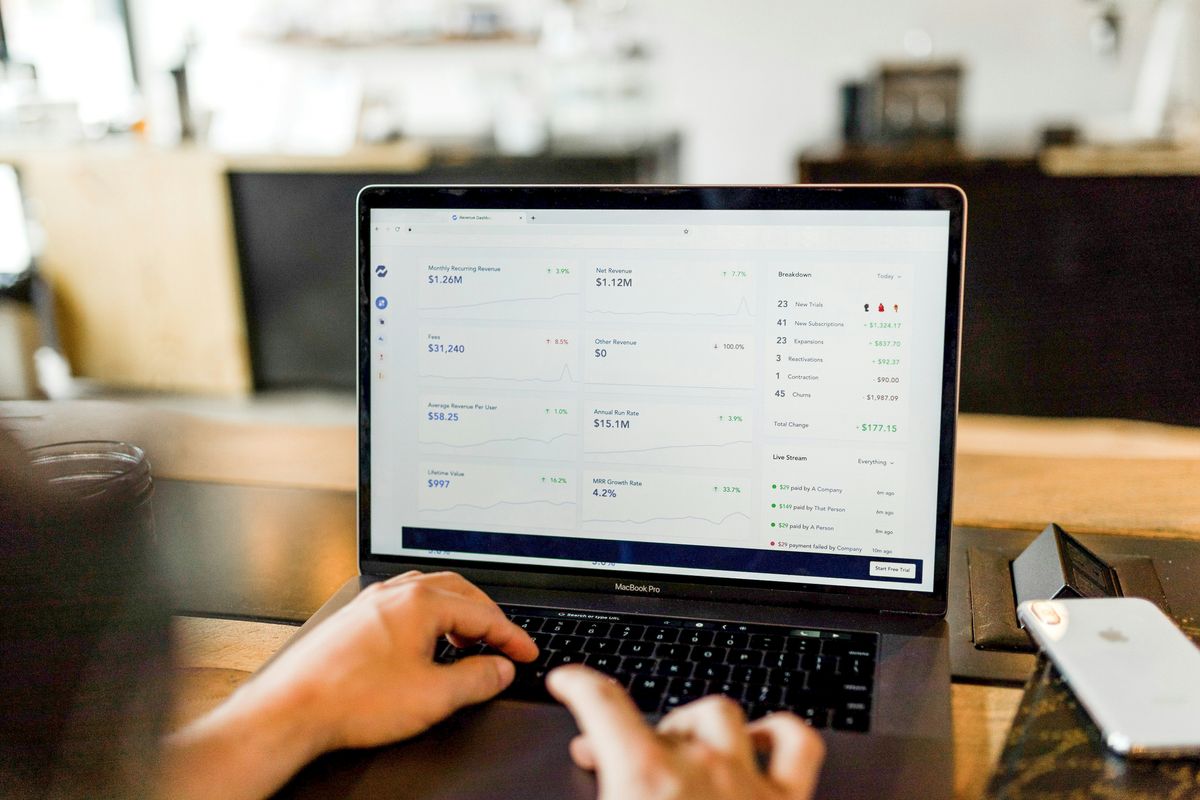Cryptocurrency trading is a complex and dynamic field that necessitates a strategic approach to manage the inherent market volatility. This article aims to provide traders with a comprehensive guide on the various strategies and techniques essential for successful crypto trading. From mastering market analysis to crafting a winning exit strategy, we will explore how to maximize profits and minimize risks in this unpredictable market. As the cryptocurrency landscape evolves, staying informed and adaptable is crucial for any trader looking to thrive in this exciting yet challenging environment.
Key Takeaways
- Cryptocurrency trading strategies are crucial for navigating market volatility and maximizing profits while minimizing risks.
- A combination of technical, fundamental, and sentiment analysis, along with whale watching, can lead to informed trading decisions.
- Effective risk management, including setting stop losses and diversifying, is essential to protect your crypto portfolio.
- Understanding various trading approaches, from day trading to leveraging DeFi, is key to exploiting market opportunities.
- Continuous learning and adapting to market trends, regulatory changes, and new technologies is vital for long-term success in crypto trading.
Mastering Market Analysis: Tools and Techniques for Crypto Traders


Understanding Technical Analysis in Crypto Trading
Technical Analysis (TA) is a pivotal tool for crypto traders aiming to forecast future price movements. It relies on the scrutiny of past market data, primarily price and volume. The core premise of TA is that historical trading activity can indicate future price trends.
Key components of Technical Analysis include:
- Chart patterns and trends
- Volume analysis
- Use of indicators like Moving Averages, RSI, and Fibonacci levels
By mastering these elements, traders can develop a nuanced understanding of market dynamics and enhance their decision-making process.
While TA can be incredibly powerful, it’s important to remember that it’s not infallible. Market conditions can change rapidly, and what worked in the past may not always predict future outcomes. Therefore, combining TA with other strategies and staying adaptable is crucial for trading success.
The Role of Fundamental Analysis in Cryptocurrency Markets
Fundamental Analysis (FA) in cryptocurrency trading is a deep dive into the intrinsic value of digital assets. It assesses economic, financial, and other vital factors that go beyond mere price movements. FA scrutinizes the efficiency of the blockchain, the robustness of the consensus mechanism, and the security features that underpin the currency. Additionally, the development team’s expertise and market dynamics play a crucial role in determining a coin’s potential.
- Blockchain Efficiency: How well the underlying technology performs.
- Consensus Mechanism: The protocol for validating transactions.
- Security Features: Measures to protect against fraud and hacking.
- Development Team: The experience and track record of the creators.
- Market Dynamics: Supply, demand, and regulatory environment.
By integrating fundamental analysis into your trading strategy, you can gain a comprehensive understanding of a cryptocurrency’s long-term prospects. This approach is essential for making informed investment decisions and can help traders avoid the pitfalls of short-term market hype.
Understanding the unique aspects of cryptocurrency trading, such as regulatory influences and macroeconomic events, is crucial for effective strategy implementation. Embracing continuous learning and analyzing your trades are key to adapting to the ever-evolving crypto landscape.
Sentiment Analysis: Gauging the Mood of the Market
In the dynamic realm of cryptocurrency trading, Sentiment Analysis plays a pivotal role in understanding the market’s mood. By analyzing the collective attitudes and emotions of market participants, traders can gain insights into potential price movements. This analysis is not just about counting positive or negative comments, but involves a more nuanced approach that includes polarity, emotion, and aspect-based analysis.
Sentiment analysis in crypto trading is about capturing the market’s pulse, which can often precede price changes.
Social media platforms like Twitter and Reddit have become treasure troves for sentiment data, providing real-time reflections of the market’s mood. By leveraging sophisticated algorithms, traders can sift through vast amounts of data to extract meaningful insights. Here’s a brief overview of how sentiment analysis can be structured:
- Monitoring social media and news outlets for public opinion
- Analyzing the tone and context of discussions
- Quantifying sentiment scores to gauge overall market sentiment
- Integrating sentiment data with other forms of market analysis
Understanding the market sentiment can be particularly useful in identifying volatile market conditions. When combined with technical and fundamental analysis, sentiment analysis can offer a more comprehensive view of the market, enabling traders to make more informed decisions.
Integrating Whale Watching for Strategic Trading Moves
In the dynamic realm of cryptocurrency, whale watching has emerged as a pivotal strategy for traders aiming to capitalize on the market’s volatility. By monitoring the transactions of crypto whales, investors can gain insights into potential market shifts. These whales, who possess substantial digital assets, have the capacity to sway the market with their trades, leading to significant price fluctuations.
Whale watching involves the meticulous tracking of large transactions to predict and act upon the market’s reaction. It’s a game of vigilance and timing, as the swift execution of trades is crucial to harness the benefits of this strategy. However, traders must exercise caution; whales are known to engage in deceptive practices that can mislead and disrupt the market for smaller investors.
- Key Takeaways:
- Vigilance in tracking large transactions
- Swift execution of strategic trades
- Caution against market manipulation by whales
While whale watching can be a powerful tool, it should complement other strategies rather than serve as the sole basis for trading decisions. The crypto market’s complexity and the cunning tactics of whales necessitate a diversified approach to trading.
Risk Management: Safeguarding Your Crypto Portfolio


Setting Stop Losses and Take Profit Points
In the unpredictable landscape of cryptocurrency trading, setting stop losses (SL) and take profit (TP) points is essential for protecting your investments. These tools help traders to lock in profits and limit losses by automatically closing a position when it reaches a predetermined price level.
-
Stop Loss (SL): A stop loss order is designed to limit an investor’s loss on a position. It’s set at a price below the current market price for a long position, or above for a short position.
-
Take Profit (TP): Conversely, a take profit order is set to execute when the price of an asset reaches a level where the trader is satisfied with the gains and ready to close the position for a profit.
Discipline and a level-headed approach are your best allies in achieving long-term success in the crypto arena.
It’s important to note that these orders can apply to the entire position or be set to trigger at various stages of the position’s value. By strategically placing SL and TP orders, traders can manage their risk and exit the market at planned points, securing profits and minimizing losses.
Diversification Strategies in Cryptocurrency Trading
In the dynamic realm of cryptocurrency trading, diversification is key to balancing risk and reward. By spreading investments across a variety of digital assets, traders can mitigate the impact of volatility on their portfolio. This approach involves allocating funds among different cryptocurrencies, sectors, and even incorporating other asset classes.
- Bitcoin (BTC): Often considered a ‘digital gold’, it’s a staple in many crypto portfolios.
- Ethereum (ETH): Powers a vast ecosystem of decentralized applications.
- Altcoins: Smaller cap coins that offer higher risk but potential for significant returns.
- Tokens: Assets representing projects or utilities within the crypto space.
- Stablecoins: Pegged to fiat currencies, they provide a haven during market turbulence.
Diversification is not just about adding more coins to your collection; it’s about creating a strategic mix that aligns with your investment goals and risk tolerance.
It’s essential to review and adjust your portfolio composition regularly, as the market’s rapid evolution can shift the balance of your investments. Remember, diversification is a method to reduce the risk of your portfolio, not to eliminate it entirely.
The Importance of On-Chain Security Measures
In the volatile landscape of cryptocurrency trading, on-chain security measures are the bedrock of safeguarding digital assets. The increasing volume of on-chain transactions has amplified the risks of scams and cyber threats, making robust security protocols non-negotiable for traders.
The crypto market’s allure often overshadows the necessity of on-chain security, a critical oversight with potentially devastating consequences.
To build resilience against such threats, consider the following steps:
- Utilize reputable exchanges with a proven track record for security.
- Opt for secure wallets, preferably hardware-based, for storing cryptocurrencies.
- Regularly update security practices in line with the latest threats.
- Stay informed about common scams and phishing tactics to avoid falling prey to them.
Remember, the safety of your investments hinges on the strength of your on-chain security measures. By prioritizing these practices, you can navigate the crypto market with greater confidence and peace of mind.
Dealing with FOMO: Staying Rational in a Hype-Driven Market
The Fear Of Missing Out (FOMO) can be a powerful and dangerous emotion in the world of cryptocurrency trading. It often leads traders to make impulsive decisions based on the success stories and hype they see around them, rather than on a well-thought-out strategy. To combat FOMO, it’s essential to adhere to a disciplined trading plan and avoid being swayed by the noise of the market.
- Educate yourself thoroughly about the market and the assets you’re interested in.
- Set clear investment goals and stick to them, regardless of market hype.
- Always perform your own due diligence before making any investment.
Remember, protecting your capital should always take precedence over chasing potential profits. By focusing on risk management and a sound investment strategy, you can navigate the market with a level-headed approach, even during times of intense hype.
FOMO can lead to overexposure in a single asset or sector, which is why diversification is key. It’s not just about spreading your investments, but also about understanding and balancing your portfolio according to your risk tolerance. This approach can help mitigate the impact of volatility and reduce the temptation to make rash decisions based on the fear of missing out.
Strategic Trading Approaches: From Day Trading to DeFi


Day Trading Cryptocurrencies: A Guide for Beginners
Day trading in the cryptocurrency market is a strategy that can be both exhilarating and challenging for beginners. It involves making multiple trades on a single day, taking advantage of the market’s short-term movements. The key to success in day trading is a solid understanding of market trends and quick decision-making.
Here are some essential steps to get started with day trading:
- Familiarize yourself with the basics of cryptocurrency and trading platforms.
- Start with a clear trading plan, including entry, exit, and risk management strategies.
- Practice with a demo account to build confidence without risking real money.
- Keep a trading journal to track your progress and refine your strategies.
Remember, day trading is not about getting rich quickly but about consistent and disciplined trading to accumulate gains over time.
While day trading can be profitable, it’s important to be aware of the risks. The cryptocurrency market is known for its volatility, which can lead to both significant gains and losses. Beginners should start with small investments and gradually increase their exposure as they gain more experience.
Swing Trading: Capitalizing on Market Momentum
Swing trading strikes a balance between the rapid pace of day trading and the patience required for long-term investment strategies. It focuses on capturing gains from market momentum over a period of several days to weeks. This approach is particularly effective in the crypto market, where volatility can create significant price movements within these time frames.
- Maintaining positions over a medium duration, avoiding the noise of short-term fluctuations.
- Utilizing a combination of technical and fundamental analysis to identify potential price movements.
- Aiming to profit from the ‘swing’ in market prices, rather than the immediate spikes or dips.
Swing traders thrive on the market’s inherent volatility, leveraging it to their advantage while remaining cognizant of the risks involved. They must be adept at reading market signals and willing to adjust their strategies as market conditions change.
The success of swing trading hinges on the ability to anticipate market trends and execute trades at the optimal moment. This requires a deep understanding of market dynamics and the discipline to stick to a well-thought-out trading plan.
Leveraging DeFi Projects for Trading Opportunities
Decentralized Finance (DeFi) is reshaping the landscape of cryptocurrency trading by offering a platform for financial activities such as lending, borrowing, and trading without the need for intermediaries. DeFi projects present unique trading opportunities by allowing traders to engage in activities that were traditionally exclusive to financial institutions.
- Yield Farming: Earn interest by providing liquidity.
- Liquidity Mining: Receive tokens as rewards for liquidity provision.
- Staking: Lock up tokens to receive rewards.
By participating in these DeFi activities, traders can potentially generate returns that are often higher than traditional savings accounts or investment vehicles. However, it’s crucial to understand the risks involved, as the DeFi space is still evolving and can be subject to high volatility and regulatory uncertainty.
The growth and innovation potential within the DeFi sector suggest that it will continue to be a significant area of interest for traders looking to diversify their strategies and capitalize on the decentralized nature of cryptocurrency markets.
Position Trading: Playing the Long Game in Crypto
Position trading is a strategic approach that involves holding onto assets for an extended period, ranging from several weeks to months, or even years. This method is particularly effective for those who believe in the long-term growth potential of cryptocurrencies and are willing to weather short-term market fluctuations for substantial returns.
- Maintaining open market positions over a medium duration
- Capitalizing on price changes across days or weeks
- Leveraging insights from technical and fundamental analysis
The primary goal is to seize gains from the market’s inherent volatility while avoiding the risks of overnight positions. Discipline and a level-headed approach are crucial in knowing not only when to enter the market but also when to exit, securing profits, and minimizing losses.
Adapt to the ever-evolving cryptocurrency market for long-term success.
While day trading and short-term strategies offer quick profits, position trading aligns with the belief in Bitcoin’s potential growth over time. Patience and discipline are essential, as this strategy can yield substantial returns for those willing to hold onto their investments through the market’s ups and downs.
Crafting a Winning Exit Strategy: When to Hold and When to Fold


Identifying the Right Time to Exit a Trade
In the unpredictable realm of cryptocurrency trading, determining the right moment to exit is as critical as the entry point. A well-defined exit strategy ensures that profits are secured and losses are curtailed, providing a safety net against the market’s volatility.
One effective approach is to set clear profit targets and stop-loss orders. This method allows traders to establish predetermined levels at which they will close their positions, either to take profits or to prevent further losses. Here’s a simple framework for setting these parameters:
- Profit Target: Set a percentage or price point above your entry where you will take profits.
- Stop-Loss Order: Define a percentage or price point below your entry where you will cut losses.
Additionally, traders should be vigilant of market indicators and trends, such as the bear market signals, which may suggest that it’s time to sell. While the bear market is the best time to buy coins, exiting during the early signs of a downturn can preserve capital for future opportunities.
Discipline and a level-headed approach are essential for executing your exit strategy effectively. Avoid the temptation to deviate from your plan in the heat of the moment.
Profit Taking Strategies for Crypto Investors
In the unpredictable landscape of cryptocurrency trading, establishing effective profit taking strategies is crucial for long-term success. These strategies help investors to lock in gains and avoid the pitfalls of market volatility. A common approach is to set target levels for taking profits, which can be based on percentage gains, specific price points, or strategic market conditions.
- Set percentage-based targets: Decide on a fixed percentage at which you will take profits, regardless of market hype.
- Use price milestones: Establish clear price points that, when reached, trigger profit taking.
- Consider market conditions: Adapt your strategy to current market trends and indicators.
Remember, the key to successful profit taking is not just about when to enter the market but also when to exit, securing profits, and minimizing losses. Discipline and a level-headed approach are your best allies.
While each investor’s approach may vary, the goal remains the same: to ensure that profits are realized before any potential downturn. This requires continuous monitoring of the market and an ability to act swiftly when the predetermined conditions are met.
The Role of Technical Indicators in Exit Planning
Technical indicators serve as the compass for crypto traders, guiding them through the tumultuous seas of market volatility to safer shores. The proper use of technical indicators is crucial in determining the optimal time to exit a trade. These tools can signal when a trend is weakening or a reversal is imminent, helping traders to lock in profits and avoid losses.
- Moving Averages (MA) indicate the average price over a specific period, providing insights into the trend direction.
- The Relative Strength Index (RSI) measures the speed and change of price movements, signaling overbought or oversold conditions.
- Fibonacci Retracement levels help identify potential support and resistance areas, which can be strategic exit points.
By setting realistic goals and adhering to a disciplined exit strategy, traders can significantly enhance their chances of success.
It’s essential to integrate these indicators into a comprehensive trading plan that includes analysis of market conditions, assessment of volatility, and comparison of different crypto platforms. The right combination of indicators will vary for each trader, depending on their trading style and the assets they are trading.
Managing Emotions and Expectations with a Clear Exit Strategy
In the dynamic landscape of cryptocurrency trading, maintaining a clear exit strategy is as crucial as having a solid entry plan. Setting realistic targets and adhering to them can make the difference between securing profits and succumbing to losses. It’s essential to recognize the signs of market shifts and to act accordingly, without letting emotions dictate your moves.
Control emotions: Emotions can significantly impact investment decisions. Avoid making impulsive decisions based on fear or excitement. Instead, rely on research and analysis when making investment choices.
Dealing with the fear of missing out (FOMO) is another aspect that traders must master. The allure of potential high returns can lead to irrational decision-making. It’s important to critically assess each opportunity and remember that protecting your investment should take precedence over chasing gains. Here are some steps to help manage emotions and expectations:
- Define your investment goals clearly.
- Establish a disciplined approach to trading.
- Stick to your exit strategy, regardless of market hype.
- Regularly review and adjust your strategy as needed.
Continuous Learning and Adaptation: Staying Ahead in the Crypto Game


Keeping Up with Market Trends and Regulatory Changes
In the fast-paced world of cryptocurrency trading, keeping up with market trends and regulatory changes is not just beneficial; it’s essential for survival. Regulatory developments can significantly influence arbitrage trading activities as the landscape evolves. Traders must stay abreast of updates and compliance requirements across different jurisdictions to ensure adherence to relevant laws and regulations.
Understanding market trends is equally critical. Factors such as macroeconomic indicators, technological advancements, and investor sentiment can all sway the direction of Bitcoin and other cryptocurrencies. By conducting thorough research and analysis, traders can gain valuable insights and make informed decisions.
Regulatory uncertainty is a risk factor that cannot be ignored. Governments worldwide are still determining how to regulate cryptocurrencies, and the landscape can change rapidly. Staying updated on regulations and investing in compliant projects is crucial to minimize risks.
Lastly, it’s important to consider how SEC regulations might alter the cryptocurrency markets. Registration requirements for exchanges and tokens could be a pivotal step, affecting everything from market liquidity to investor protections.
The Importance of Ongoing Education in Crypto Trading
In the fast-paced world of cryptocurrency trading, ongoing education is paramount to maintaining a competitive edge. As the market evolves, traders must adapt to new trends, technologies, and regulatory landscapes.
- Master the fundamentals: A strong grasp of the basics sets the stage for advanced learning.
- Develop a strategic approach: Tailoring strategies to personal goals and market conditions is essential.
- Embrace continuous learning: Regularly updating knowledge and skills is crucial for long-term success.
The landscape of crypto trading is ever-changing, and those who commit to continuous learning can pivot with the market’s demands, ensuring they are not left behind.
The importance of education in crypto trading cannot be overstated. A website page that covers various topics related to cryptocurrency trading, strategies, and comparisons of different platforms can be an invaluable resource for traders. It emphasizes the importance of cryptocurrencies in the future, signaling that the commitment to learning is not just beneficial, but necessary for anyone looking to succeed in this volatile market.
Incorporating New Technologies and Platforms
The cryptocurrency landscape is continuously evolving, with new technologies and platforms emerging at a rapid pace. Incorporating these innovations is crucial for traders aiming to maintain a competitive edge.
- Artificial intelligence (AI) and machine learning are revolutionizing market analysis, enabling more accurate predictions and automated trading strategies.
- Blockchain enhancements are improving transaction speeds and security, directly impacting the efficiency of trading operations.
- Decentralized finance (DeFi) platforms offer novel trading instruments and opportunities for yield generation.
Embracing these technologies not only provides traders with advanced tools but also opens up new avenues for diversification and risk management.
Staying abreast of technological advancements is not just about adopting new tools; it’s about understanding their implications on the market dynamics. The fusion of technology and finance in the digital currency realm necessitates a robust grasp of these changes to navigate the market effectively.
Building a Community: Learning from Other Traders
In the dynamic realm of cryptocurrency trading, building a community can be as crucial as mastering the markets. Engaging with fellow traders allows for the exchange of strategies, insights, and real-time market updates. A well-connected community can provide support during volatile market conditions and offer diverse perspectives that might otherwise be overlooked.
- Define clear objectives for community engagement
- Foster an environment of trust and mutual respect
- Encourage knowledge sharing and collaboration
- Organize regular meetups, virtual or in-person
By creating a space where traders can share their experiences and strategies, you not only enrich your own trading approach but also contribute to the collective wisdom of the group. This collaborative effort can lead to more informed decision-making and a stronger sense of camaraderie in an often solitary pursuit.
Remember, the goal is not just to receive but to actively contribute to the community. Whether it’s through social media platforms, forums, or dedicated trading groups, participation is key. A thriving community is built on the contributions of its members, and every trader has unique experiences that can benefit others.
Conclusion
In summary, the dynamic and unpredictable nature of the cryptocurrency market demands a strategic and informed approach to trading. By integrating the insights and strategies discussed throughout this article, traders can enhance their ability to capitalize on market trends and mitigate potential risks. It’s essential to stay educated and adaptable as the market evolves, employing both technical analysis and a deep understanding of market psychology. Remember, while the volatility of the crypto world presents challenges, it also offers the potential for substantial rewards. As we continue to witness the growth and maturation of the cryptocurrency space, traders who are well-prepared and strategic will be best positioned to thrive in this exciting and burgeoning market.
Frequently Asked Questions
What are the key strategies for successful crypto trading?
Successful crypto trading strategies include mastering market analysis, employing robust risk management techniques, exploring various trading approaches like day trading and DeFi, crafting a clear exit strategy, and continuously learning to adapt to market trends and regulatory changes.
How does technical analysis differ in crypto trading compared to traditional stock trading?
Technical analysis in crypto trading often deals with more volatility and less regulatory oversight compared to traditional stock trading. Crypto traders may also rely on different indicators and patterns due to the 24/7 nature of the market and the influence of social media and news on cryptocurrency prices.
Why is risk management important in cryptocurrency trading?
Risk management is crucial in cryptocurrency trading due to the market’s inherent volatility. It helps traders minimize potential losses, safeguard their portfolios, and maintain a level head during market fluctuations by implementing strategies like setting stop losses, diversifying assets, and ensuring on-chain security.
Can DeFi projects offer legitimate trading opportunities?
Yes, DeFi projects can offer legitimate trading opportunities by providing access to new financial instruments and platforms. Traders can leverage these projects for yield farming, liquidity provision, and other innovative trading strategies that are not available in traditional financial markets.
What factors should be considered when crafting a crypto exit strategy?
When crafting a crypto exit strategy, consider market trends, technical indicators, profit targets, and personal financial goals. It’s also important to manage emotions and expectations, ensuring decisions are based on data and analysis rather than hype or fear.
How can traders stay updated and adapt to the rapidly evolving crypto market?
Traders can stay updated by following crypto news outlets, participating in online communities, attending industry events, and continuously educating themselves on new technologies and trading platforms. Adapting to the market also involves revising strategies in response to regulatory changes and market trends.






